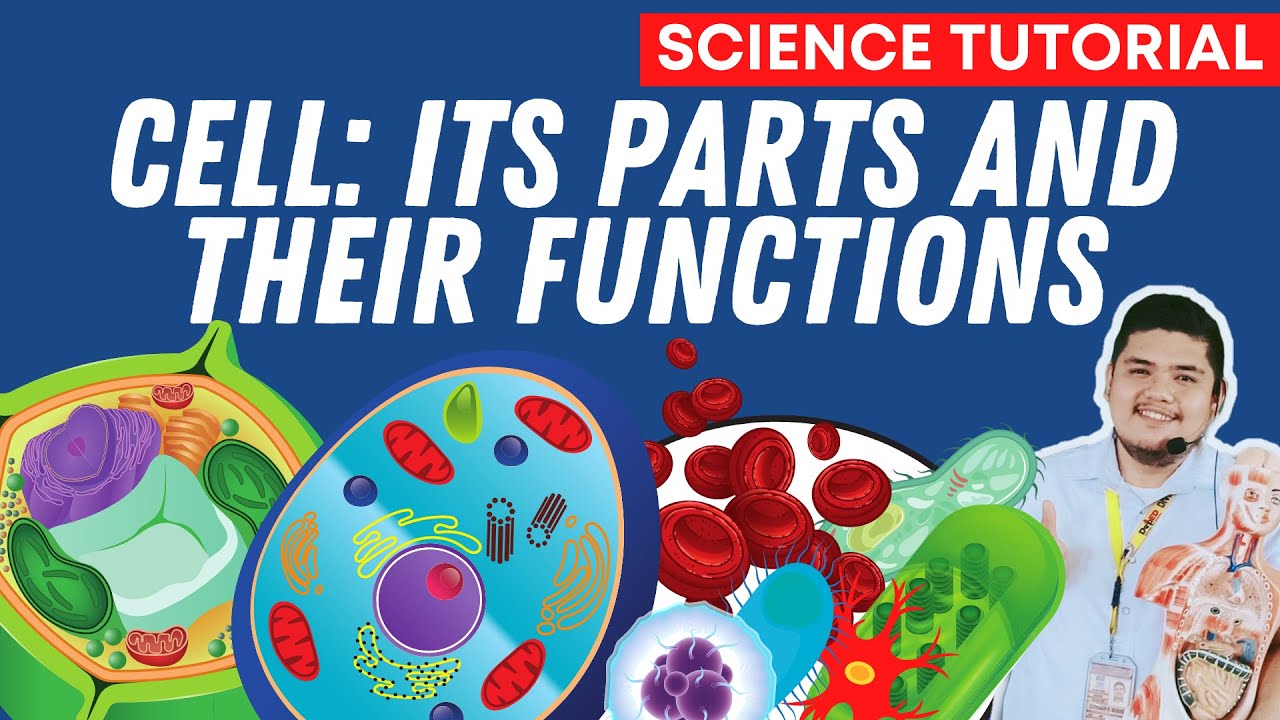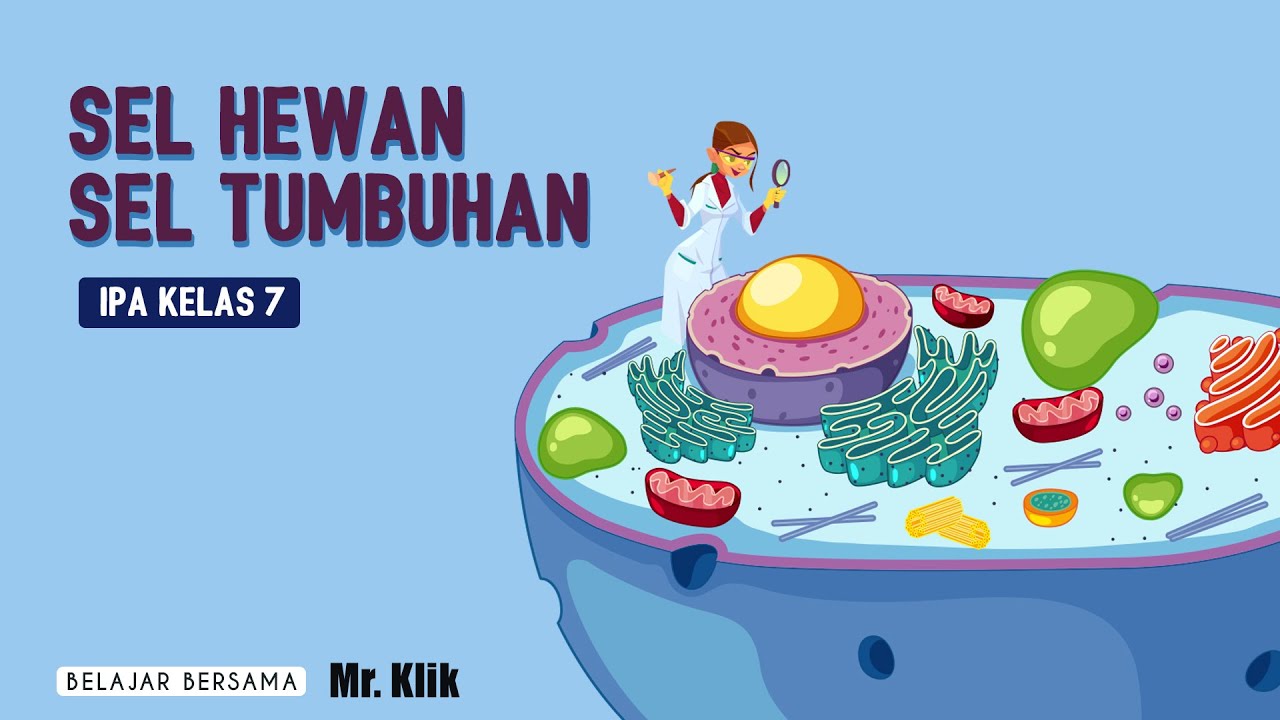Organelles of the Cell
Summary
TLDRThis educational video script delves into the intricate components of a eukaryotic cell, emphasizing the plasma membrane, nucleus, and cytoplasm as the cell's foundational sections. It illustrates the cytoplasm's role as a medium for chemical reactions and the plasma membrane's selective permeability. The nucleus, often dubbed the 'control center,' houses DNA and directs protein synthesis. Ribosomes, ER, and the GOI body collaborate in protein production and modification. Mitochondria, known as the 'powerhouse,' generate energy through cellular respiration. The script also touches on the endosymbiosis theory, suggesting mitochondria and chloroplasts were once independent organisms. Lysosomes handle waste and food breakdown, while vacuoles store materials. The video concludes with a review of these concepts, encouraging viewer engagement.
Takeaways
- 🔬 Organelles are specialized structures within cells that perform specific functions, akin to organs in the body.
- 🌟 The plasma membrane, or cell membrane, is a lipid bilayer that selectively allows substances to pass in and out of the cell.
- 🧬 The nucleus acts as the cell's control center, housing DNA and directing the cell's activities through the production of proteins.
- 🍯 The cytoplasm is a gel-like substance that fills the cell and facilitates chemical reactions, including the dissolution of solutes like carbohydrates and proteins.
- 🏋️♂️ Ribosomes are the cellular structures responsible for protein synthesis, translating genetic information into functional proteins.
- 📦 The Golgi apparatus modifies, sorts, and packages proteins for transport within the cell or for secretion outside the cell.
- ⚡ Mitochondria are known as the 'powerhouses' of the cell, generating energy in the form of ATP through cellular respiration.
- 🔁 Endosymbiosis theory suggests that mitochondria and chloroplasts were once free-living organisms that became incorporated into larger cells.
- 🌱 Chloroplasts, found in plant cells, carry out photosynthesis, converting sunlight into glucose and oxygen using chlorophyll.
- 💧 Vacuoles store water, nutrients, waste products, and pigments, and can also regulate the cell's internal environment.
Q & A
What is meant by the term 'organelle' in the context of a eukaryotic cell?
-An organelle refers to the small specialized structures within a eukaryotic cell that perform specific functions necessary for the cell's survival and operation.
What are the three basic functions that all cells must perform?
-All cells must perform the functions of taking in food, getting rid of waste, and reproducing.
What is the primary role of the plasma membrane, also known as the cell membrane?
-The plasma membrane's primary role is to regulate the passage of materials into and out of the cell, acting as a selectively permeable barrier.
What is the cytoplasm and what does it do?
-The cytoplasm is a jellylike substance filling the cell, providing a medium for organelles to float within and facilitating various chemical reactions, including the dissolution of solutes like carbohydrates and proteins.
Why is the nucleus often referred to as the 'control center' of the cell?
-The nucleus is called the 'control center' because it contains DNA in the form of chromatin, which holds the genetic instructions for making proteins that perform most of the work within the cell.
What is the function of the nucleolus within the nucleus?
-The nucleolus is responsible for producing ribosomes, which are essential for protein synthesis within the cell.
How does the rough endoplasmic reticulum differ from the smooth endoplasmic reticulum?
-The rough endoplasmic reticulum is covered in ribosomes, which are involved in protein synthesis, while the smooth endoplasmic reticulum lacks ribosomes and is involved in lipid synthesis and toxin breakdown.
What is the role of ribosomes in the cell?
-Ribosomes are responsible for protein synthesis by linking amino acids together to form proteins, a process also known as translation.
What is the function of the Golgi apparatus in the cell?
-The Golgi apparatus receives proteins from ribosomes, modifies them, sorts, and packages them into vesicles for export from the cell.
What is the significance of the mitochondria being referred to as the 'powerhouse' of the cell?
-Mitochondria are called the 'powerhouse' because they generate ATP, the cell's primary energy molecule, through cellular respiration.
What is the endosymbiosis theory and how does it relate to the origin of mitochondria and chloroplasts?
-The endosymbiosis theory suggests that mitochondria and chloroplasts were once free-living organisms that were engulfed by a larger cell and eventually became integrated as organelles, surviving and reproducing within the host cell.
What is the primary role of lysosomes within a cell?
-Lysosomes contain digestive enzymes that break down various materials, including food particles, pathogens engulfed by immune cells, and even old or damaged cell components.
How do cilia and flagella differ in structure and function within cells?
-Cilia are short, hairlike extensions that aid in movement over short distances, while flagella are long, whip-like structures that can propel cells over greater distances, such as in the case of sperm cells.
What is the cell wall and what is its primary function?
-The cell wall is a tough, outermost layer found in plant, fungal, and bacterial cells, providing structural support and protection.
What is the role of chloroplasts in plant cells?
-Chloroplasts perform photosynthesis, converting sunlight, carbon dioxide, and water into glucose and oxygen, using the green pigment chlorophyll.
What is the function of the vacuole in both plant and animal cells?
-The vacuole serves as a storage area for food, water, waste, and pigments. In plant cells, it is often the largest organelle, pushing other structures to the cell's periphery.
Outlines

Dieser Bereich ist nur für Premium-Benutzer verfügbar. Bitte führen Sie ein Upgrade durch, um auf diesen Abschnitt zuzugreifen.
Upgrade durchführenMindmap

Dieser Bereich ist nur für Premium-Benutzer verfügbar. Bitte führen Sie ein Upgrade durch, um auf diesen Abschnitt zuzugreifen.
Upgrade durchführenKeywords

Dieser Bereich ist nur für Premium-Benutzer verfügbar. Bitte führen Sie ein Upgrade durch, um auf diesen Abschnitt zuzugreifen.
Upgrade durchführenHighlights

Dieser Bereich ist nur für Premium-Benutzer verfügbar. Bitte führen Sie ein Upgrade durch, um auf diesen Abschnitt zuzugreifen.
Upgrade durchführenTranscripts

Dieser Bereich ist nur für Premium-Benutzer verfügbar. Bitte führen Sie ein Upgrade durch, um auf diesen Abschnitt zuzugreifen.
Upgrade durchführenWeitere ähnliche Videos ansehen

PARTS AND FUNCTIONS OF A CELL SCIENCE 7 QUARTER 2 MODULE 3

Biology: Cell Structure I Nucleus Medical Media

CELL CONTENT

Cells (Parts and Functions), Plant and Animal Cell | Grade 7 Science DepEd MELC Quarter 2 Module 4

Struktur dan Fungsi Komponen Sel Tumbuhan

SISTEM ORGANISASI KEHIDUPAN | SEL HEWAN DAN SEL TUMBUHAN
5.0 / 5 (0 votes)
